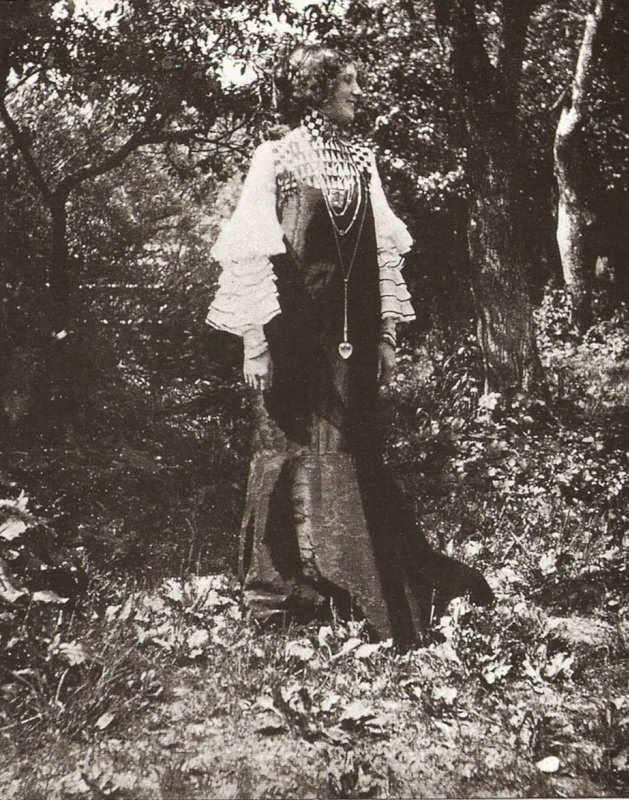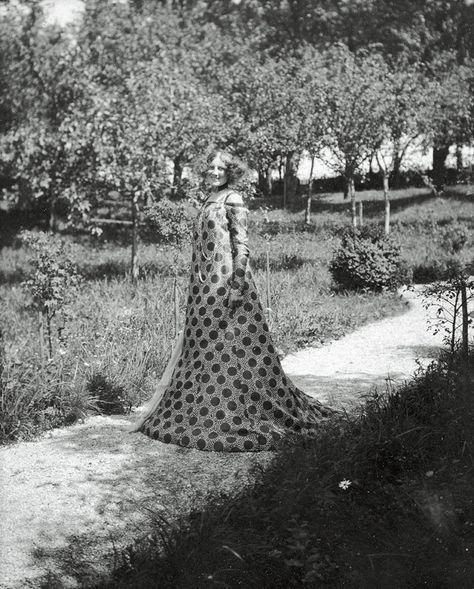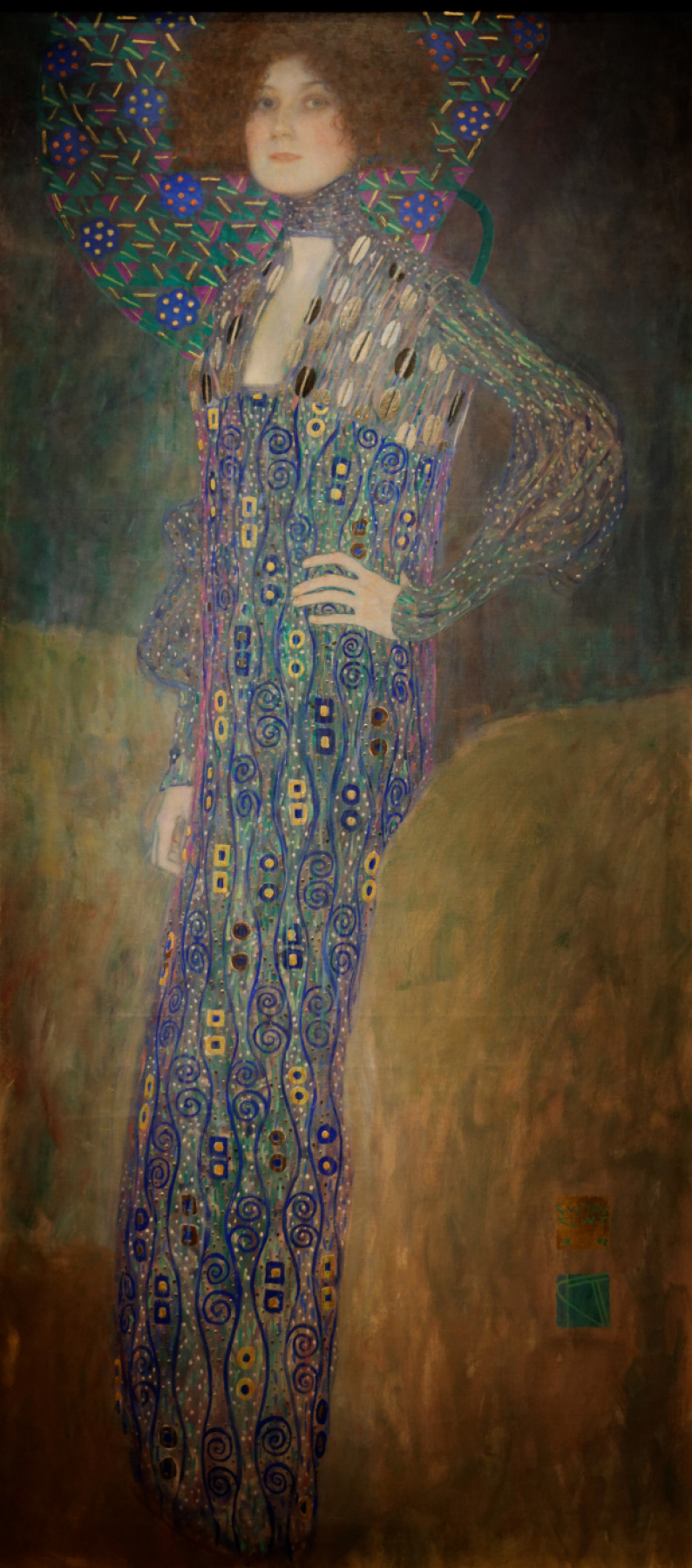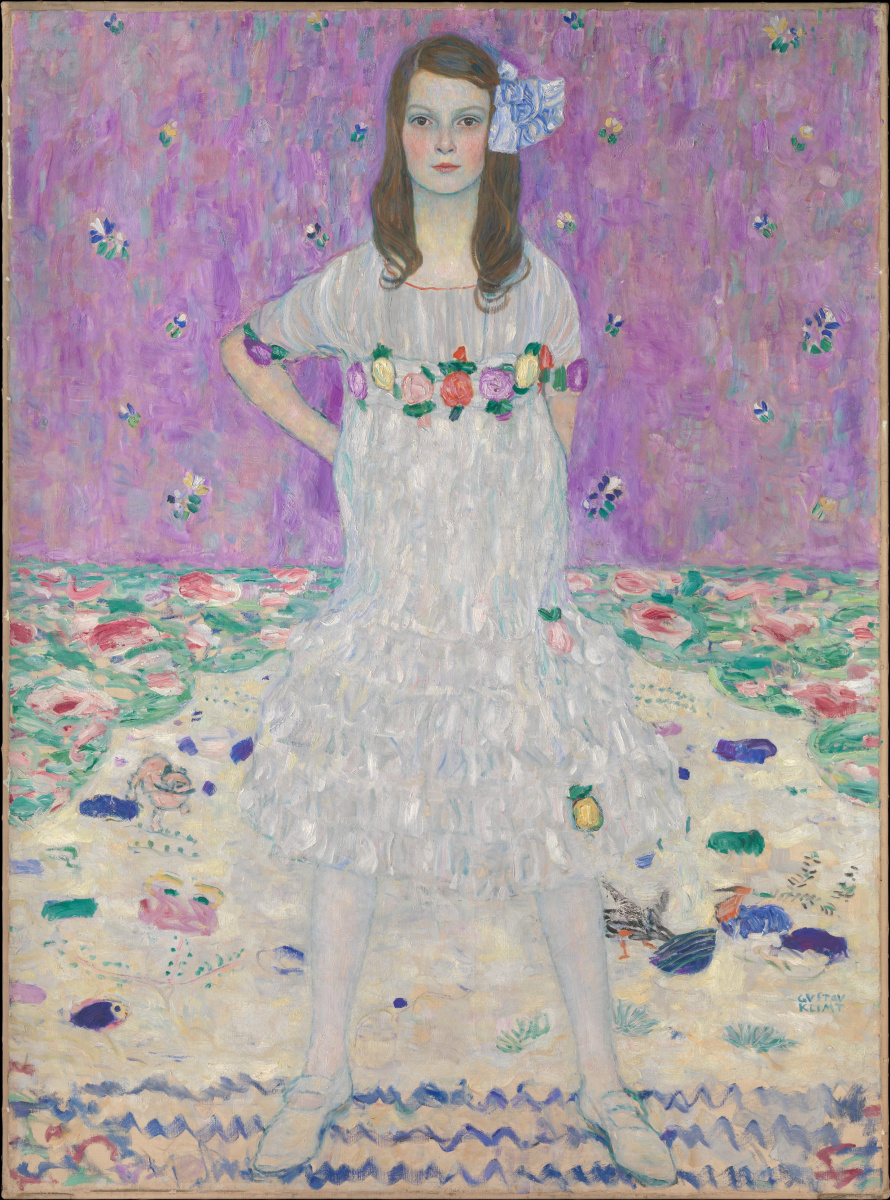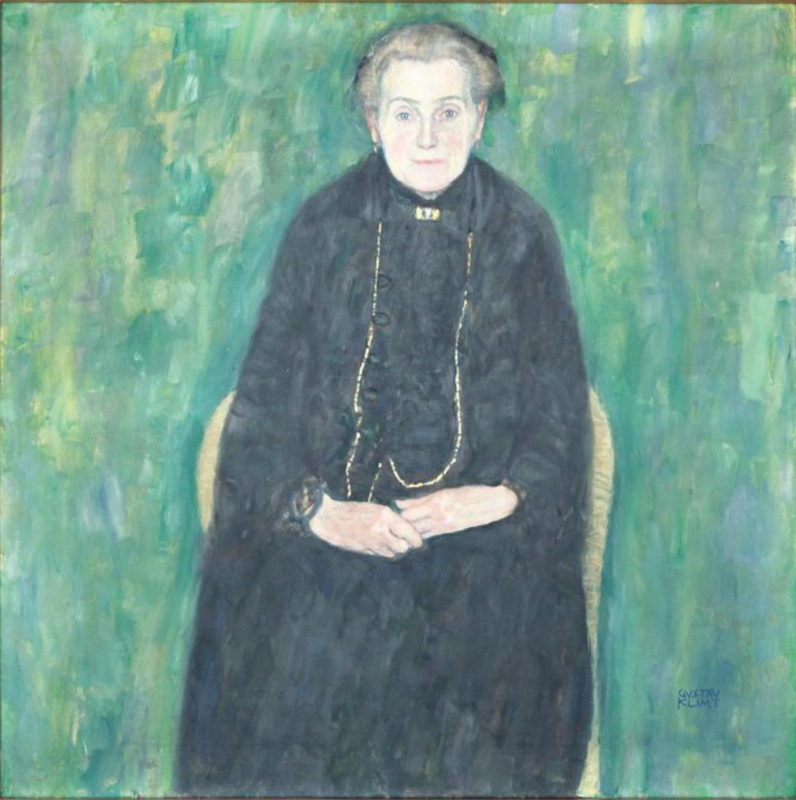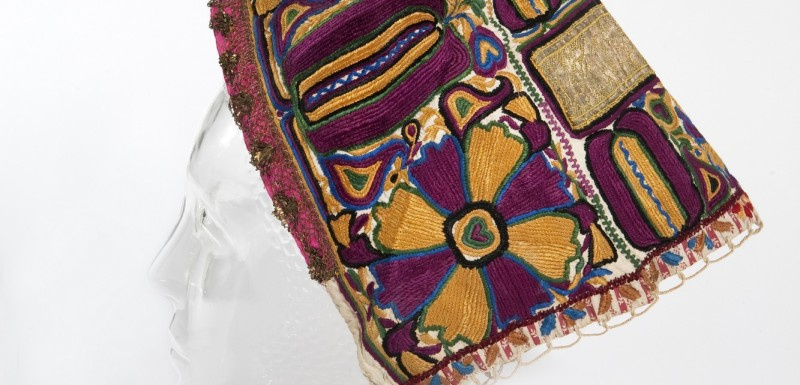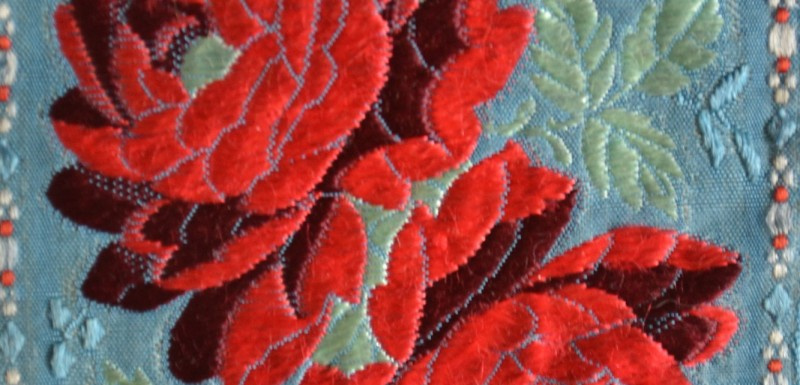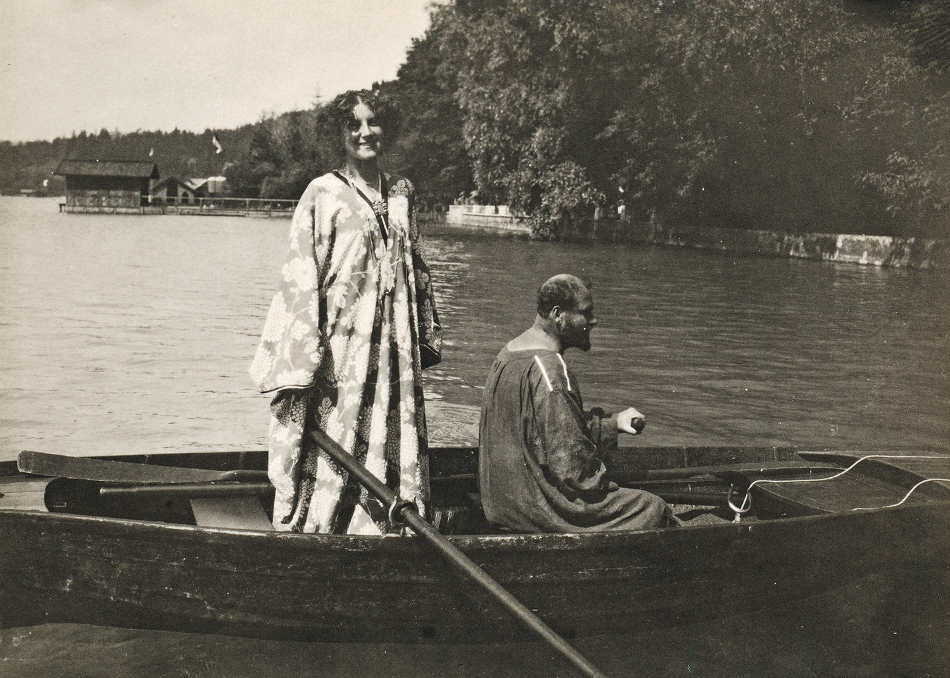
The story of how they met
The Klimt and the Flöge families were related. In 1891, the artist`s brother Ernst married the elder sister of Emilie, and in the same year Gustav painted a portrait of his sister-in-law. From the earliest days of their acquaintance, Gustav, being in his thirties, liked to be around seventeen-year-old Emilie. To gain the sympathy of the girl he even agreed to learn French together. That was how they spent their first "dates" - innocently and usefully.To share his impressions with Emilie became a necessity for Gustav. In 1903, he wrote her about the "incredible beauty" of the 6th century mosaics in Italian Ravenna, which largely influenced the technique of his "Golden period". The profession of her friend and their endless conversations about art obviously had an impact on Klimt`s companion. As a worthy pupil of the first painter of the Vienna Secession she would soon make her own revolution in the world of fashion.
The "Flöge Sisters" fashion salon
The interiors of the salon were decorated in a modernist style by the leading designers of the Vienna Secession from the "Vienna`s Workshops" (Wiener Werkstätte), which made an impression on the customers. The salon flourished, it became a fashionable meeting point for the ladies of Vienna high society. By 1914, most Viennese fashionistas had become their clients. Those women belonged to the enlightened circles of the Jewish industrialists, who commissioned portraits from Klimt.

Flöge's style of dress was known as the Reform Dress, and it carried the spirit of freedom, expressing a new look on beauty in clothing. Striving to free women from the tight corsets, a free-thinking couturier dressed her clients in loose-fitting dresses to emphasize their femininity. Emilia liked to wear her own models and often posed in them in nature, emphasizing their elegance and naturalness.
The style of the reform dress was also seen as a way of self-expression, it was designed for a strong and confident woman. Though only a few progressive circles adopted this style in their belief that the emancipation of the fashion would open the way to more free thinking.
Nevertheless, Emilie`s salon "Flöge Sisters" had to take into account the tastes of the epoque and to produce dresses, which were in great demand.
Emilie Flöge vacationing at the Attersee lake. 1906. Photograph: Gustav Klimt. Source: theredlist.com
Photographs: messynessychic.com, theredlist.com
Portrait of Emilie and dresses for Emilie
The researchers of Klimt`s life are still controversial about the platonic nature of the artist’s relationship with Emilie. A possible hint may be suggested by the 1902 portrait of Emilie. Viennese Casanova reveals his feelings there.Majestic, sensitive and fragile Emilie is depicted not as just the lady, who challenged her conventional role in the society. She is a Goddess. As it is impossible to reach the deity and rule over it, the artist shows Emilie towering in her full-length with a stylized halo as an inaccessible shrine and his Lady.
Emilie and her family did not like this portrait, she refused to accept it, and in 1908 the painting was acquired for the Vienna Historical Museum.
It is known that it was Klimt who designed the dress for Hermine Gallia to pose for the portrait. He also created a model of the airy ruffled dress for Emilie.
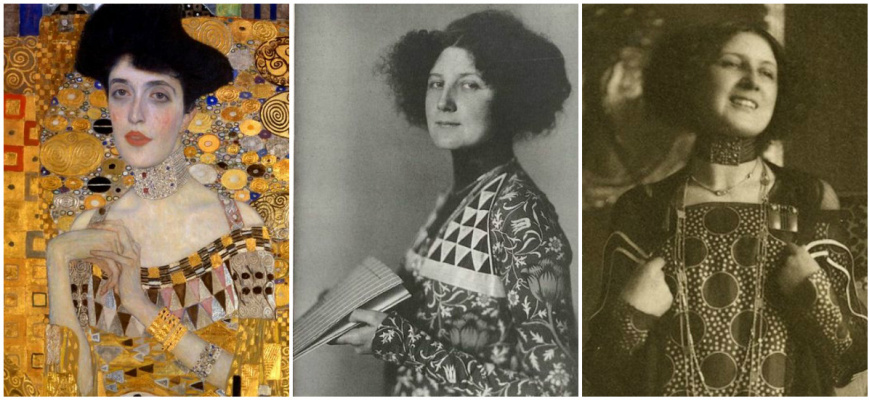
Photographs of Emilie Flöge: messynessychic.com
Klimt contributed to the promotion of Emilie`s business: he recommended his friend’s salon to his wealthy clients. Many ladies from the artist`s portraits dressed at the "Flöge Sisters" salon. They even posed for Klimt in the dresses designed by Emilie. Their common customers were Sonja Knips and Friederike Maria Beer.
Upon Klimt`s reccomendation, Emilie designed the dress for a nine-year-old Mada Primavesi especially for this portrait. Klimt rarely portrayed children and the elderly ladies. Though, one of his portraits features Emilie`s mother.
What inspired them
One of the sources of inspiration for Gustav and Emilie were their impressive collections of Eastern and European art. Klimt collected Japanese prints, and Emilia was passionate about the folk textiles of Central Europe. She exhibited lace and embroidery fragments in the shopping window of her salon. These ethnic patterns inspired Emilie for the new ideas and unexpected color combinations in decorating her model dresses.In the early twentieth century folk art objects were something fresh and exotic to urban citizens. Thanks to the collectors, these works of decorative art began to acquire artistic and aesthetic value, thus having influence on the stylistic development of Art Nouveau.

Photograph: andreajanke-accessory.blogspot.com

Photograph by Hans Böhler, Neue Galerie, New York.
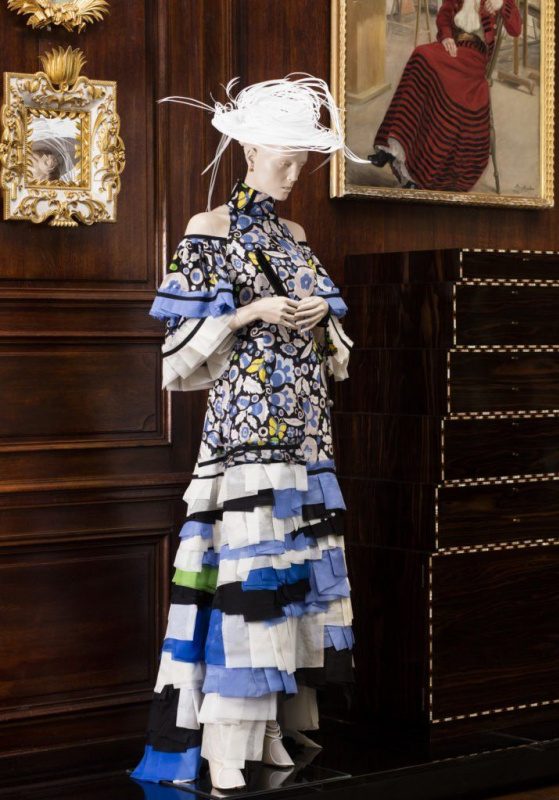
In recent years, the interest to the work of Emilie Flöge increased. The reason is not just the fact that she was s a friend of the famous artist, but primarily because of her talent in the fashion design that influenced the development of the fashion industry.
Dress model by Emilie Flöge, recreated by the Shanghai artist and designer Han Feng (the "Seven Muses of Gustav Klimt" exhibition, 2016. Neue Galerie, New York). Photograph: news.artnet.com
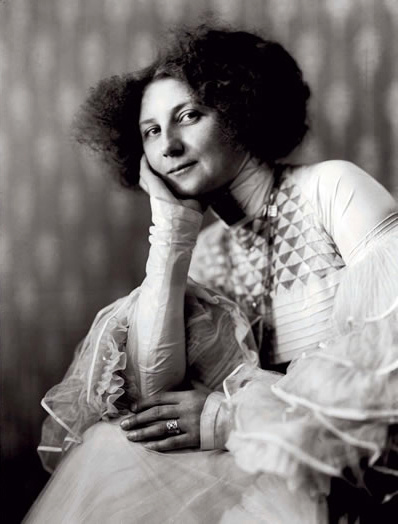
The couturier and the artist shared another passion. It was jewelry. Emilia loved to wear it, and Klimt, to paint. The artist pampered his friend with the gifts of her favorite and most popular Viennese brand, "Wiener Werkstätte".
The owner of the fashion house was also a model. She promoted jewelry of the "Wiener Werkstätte" (Viennese workshops), a famous creative community of designers, artists and architects of the early twentieth century. Their spectacular jewelry with semiprecious stones was prized for its artistic decoration, and the style was close to that of their famous colleague, Gustav Klimt.
Photograph: Emilie Flöge in the jewelry by the "Wiener werkstätte". 1910. © ÖNB, Bildarchiv
Away from all
Since 1898, Emilie and Gustav spent the summer months on the Attersee lake in Upper Austria: first, in the Flöges` family villa not far from the village of Weissenbach, and later on in Villa Oleander. The gardens, parks with the tree-lined lanes and a wonderful lake were pacifying. Especially for Klimt, who left his next girlfriend in Vienna being exhausted from his endless love affairs and fleeting relationships.Gustav Klimt put on his blue cotton painter’s smock that bore embroidered decoration at the shoulders (he also preferred it while working in his studio), Emilia wore her exquisite silk dresses, and together they went boating, strolled round the gardens, occasionally meeting their relatives and friends.

Photograph: (c)Private collection. Source: artinwords. de
Get Emilie!
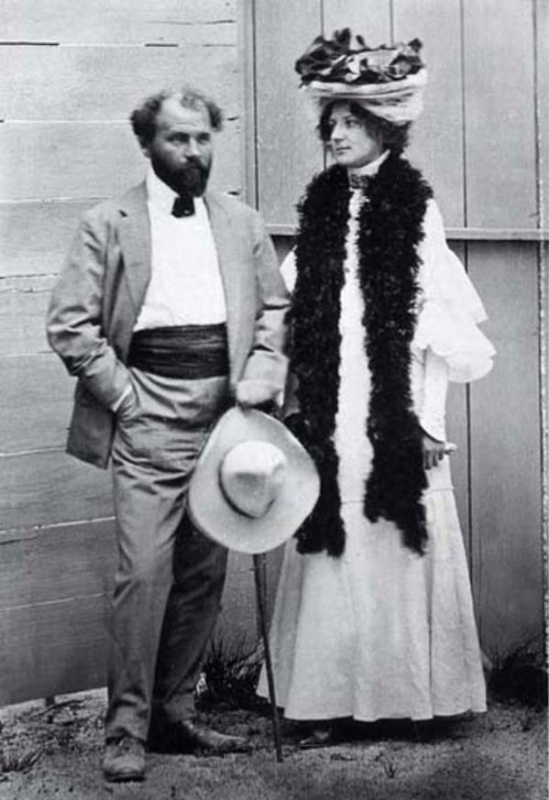
Klimt died in 1918. His last words reportedly were, "Get Emilie." After the artist`s death Emilie Flöge burned all the letters she had received from him, but she left intact the "Klimt`s room" in Casa Piccalo. She transformed it into a cozy museum to keep the artist`s easel, clothes, paintings and furniture.
After the annexation of Austria to Germany in 1938, the "Flöge Sisters" lost most of their customers and had to close the studio.
Emilie Flöge led a solitary life. She died in 1952, having gone through the artist in 34 years. Emilie had never been married.
Gustav Klimt and Emilie Flöge. 1899. Photograph: theredlist.com
Photograph by Emma Bacher. 1909. Private collection. Source: artinwords. de








